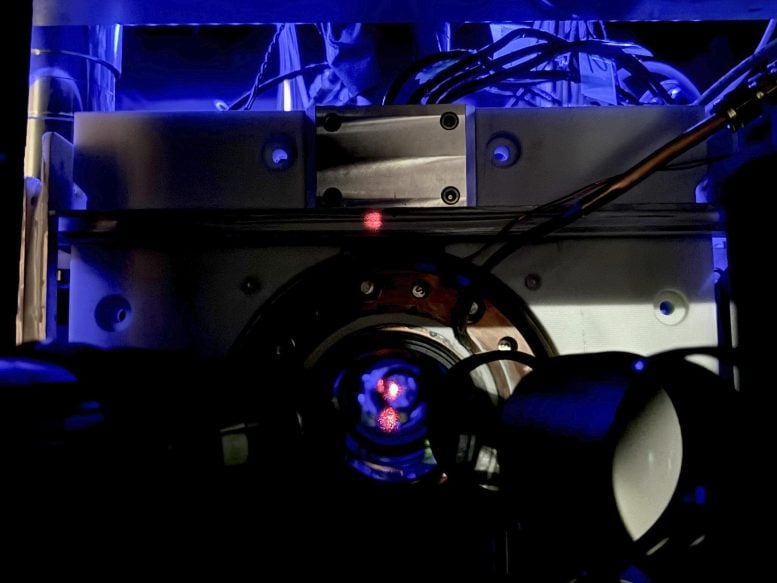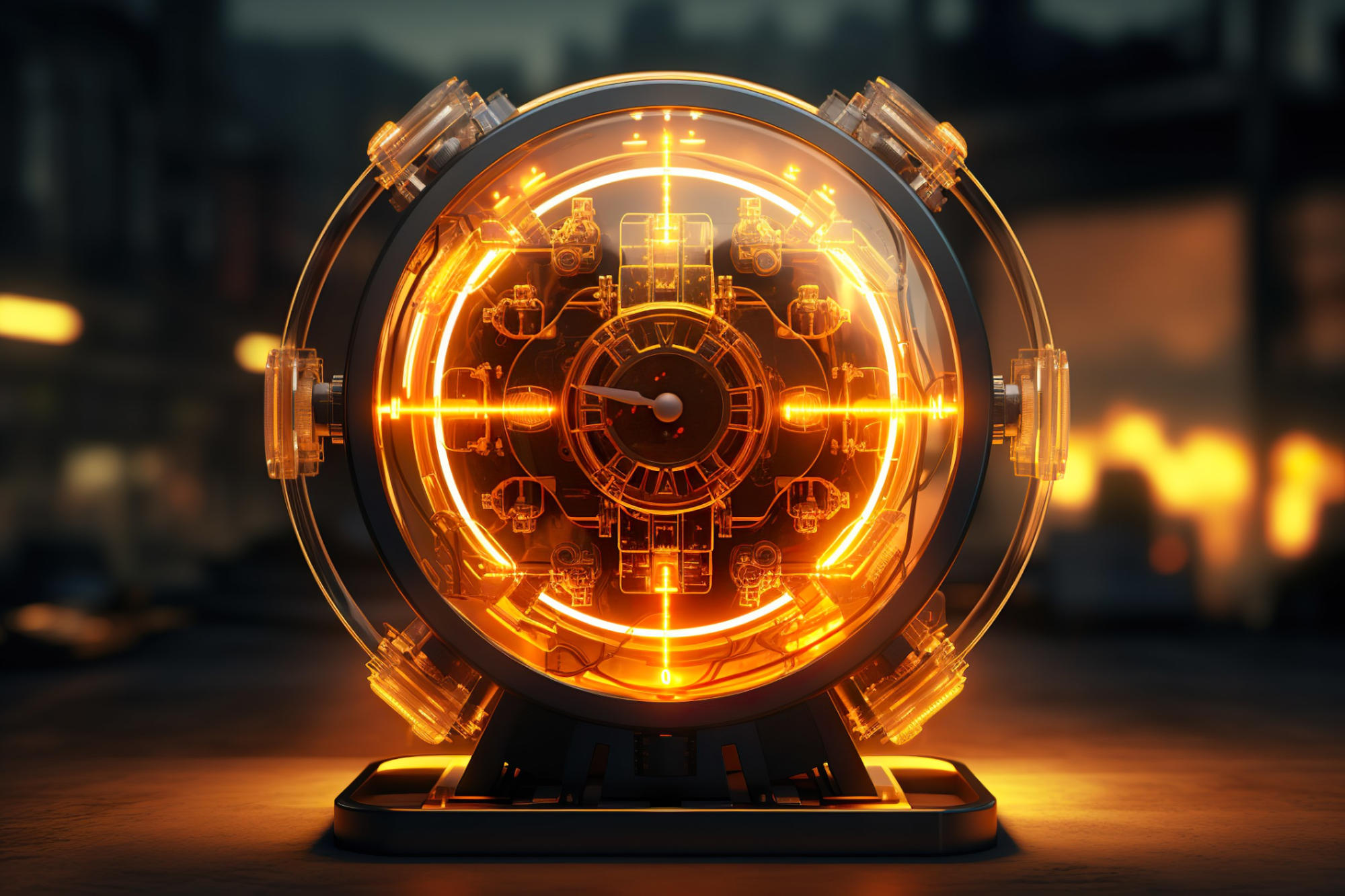Scientists at JILA have developed an ultra-precise atomic clock, advancing timekeeping accuracy to unprecedented levels. This innovation, which measures time using visible light waves, could transform navigation, reveal hidden resources, and test fundamental theories like general relativity. (Artist’s concept.) Credit: SciTechDaily.com
JILA researchers have created the most precise atomic clock yet, using visible light for time measurement. This breakthrough could redefine timekeeping standards and unlock new insights in physics, aiding both space exploration and 
An extremely cold gas of strontium atoms is trapped in a web of light known as an optical lattice. The atoms are held in an ultrahigh-vacuum environment, which means there is almost no air or other gases present. This vacuum helps preserve the atoms’ delicate quantum states, which are fragile. The red dot you see in the image is a reflection of the laser light used to create the atom trap. Credit: K. Palubicki/NIST
To achieve new record-breaking performance, the JILA researchers used a shallower, gentler “web” of laser light to trap the atoms, compared with previous optical lattice clocks. This significantly reduced two major sources of error — effects from the laser light that traps the atoms, and atoms bumping into one another when they are packed too tightly.
The researchers describe their advances in DOI: 10.1103/PhysRevLett.133.023401





















Discussion about this post